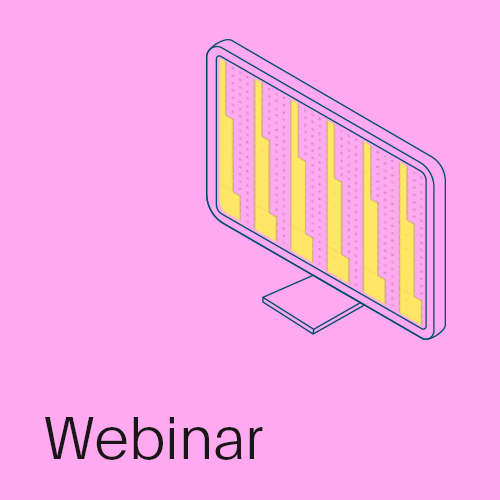What is IT Alerting?
The cost of IT disruptions are increasing exponentially as downtime hurts both the top and bottom line. At the same time, operational complexity is also increasing with the emergence of new technologies that improve agility, distributed service ownership, and shadow IT. Technical teams must stay on top of issues that take place across their infrastructure stacks. In order to detect problems and mitigate business risk, organizations typically implement an IT alerting system.
The IT alerting system should centralize alerts from different tools — such as monitoring, ITSM, and more — and automatically route alerts to the right individuals so they can take action as quickly as possible.
IT Alerting Requirements & Best Practices
Modern operations teams monitor their IT infrastructure health by implementing different monitoring tools that generate events and alerts, which indicate changes to the IT environment or a monitor being in a failed state. Many IT and development teams get hundreds of emails a day from their monitoring systems due to alert storms that flood their inboxes. This type of notification traffic creates ‘alert fatigue,’ which makes it very difficult to triage and prioritize potentially serious problems.
The best way to make sense of events and alerts across a complex, ever-growing IT stack is to implement a flexible solution that centralizes, normalizes, de-duplicates, and correlates alerts, and surface actionable insights from all of this data. The data generated by these monitoring tools should be centralized in a single location from which information can be triaged and routed to the right on-call engineer.
IT alerting system requirements
Because an IT alerting system plays such a critical role in maintaining system uptime, there are a few essential requirements and functions to look out for when implementing a solution.
Normalization, Deduplication, Correlation
The system should prevent alert fatigue by automatically reducing redundant or unactionable alerts. This can be done through the de-duplication of redundant alerts and grouping of related alerts into a single notification for improved context. Events across different monitoring tools should also be normalized into a common format to minimize cognitive load.
Customizable Notification Options
Team members should have the option to choose how they want to be notified of issues for different severity levels (for example, one might choose to be notified by phone for a P1, but by email if it’s not urgent or off-hours).
This also incentivizes team members to keep their contact information up-to-date, improving the likelihood that they can be reached effectively.
Automated Alerting & Escalations
The IT alerting system should automatically notify the right team members based on a predefined on-call rotation, and escalate to additional levels of defense if an issue is missed.
Ease of Integration
Today’s IT environments are incredibly complex, so it’s essential to identify a solution that is easy to self-serve and integrate with. This also improves ROI of current and future IT investments by ensuring that data can be better shared across tools and distributed teams.
Analytics and Reporting
Alert and incident tracking, audits, and reporting are important capabilities to help teams understand where they can boost efficiency and productivity by improving response processes, fine-tuning event rules and alerting, and more.
High Availability and Scalability
Because reliable alerting is so mission-critical, it’s crucial to invest in a solution with enterprise-grade architectural redundancy or scale to ensure you’re not leaving the business open to risks.
An alerting solution must be always-on and adhere to stringent SLA’s, so it’s important to select a vendor that is highly transparent about its uptime/downtime and has no scheduled maintenance windows.
“PagerDuty is a critical part of our alerting mechanisms and has helped us handle issues at all times of the night. We’d be pretty unhappy without it”
— Mike Fiedler, Director of Technical Operations, Datadog
How to Implement Rich and Reliable Alerting
PagerDuty ensures you’ll never miss a critical alert. Centralize alerts from any IT Operations and DevOps stack and notify your team of critical incidents in the way that works best for each individual user. Get self-service started in minutes with our 300+ native monitoring, deployment, ticketing, and collaboration tools. Developers can also integrate their systems with open API’s and webhooks. Check out some of the benefits of PagerDuty’s rich, reliable alerting below:
| Multi-User Alerting | Notify multiple responders at once to orchestrate a real-time, cross-functional response. |
| Alert Noise Reduction | PagerDuty will automatically group related alerts into a single incident, minimizing alert fatigue while centralizing critical context to accelerate triage. |
| Enriched Incident Context | Include graphs, images, runbook links, or links to conference calls directly in the incident details. |
| Multiple Alert Types | Send automated notifications via SMS message, mobile app push notification, phone call, or email. |
| Rich HTML Email Notifications | See critical details, monitoring graphs, images, and more directly within your PagerDuty email notifications, enabling your team to shave time off the response workflow. |
| Dynamic Notifications | Customize notification channels and behavior based on event payloads, service, or time of day. |
| Incident History Audit | Keep an audit trail of all notifications and status updates directly in the incident, including confirmation of notification delivery to devices. |
Learn more
To learn more about best practice IT alerting, please see the following resources:
-
- Alerting Principles: Guide on how to set alert priorities, priority examples, enriching alert content, and testing alerts
- Using alerts in PagerDuty: Knowledge Base article on alerting best practices such as service-based alerting, alert filtering and search, and more

Additional
Resources

Webinar
CSOPs Certification Primer

Webinar
A Closer Look at PagerDuty’s AIOps Solution: Putting the Action in Actionable Intelligence